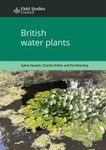![Long-term Limnological Research and Monitoring at Crater Lake, Oregon Long-term Limnological Research and Monitoring at Crater Lake, Oregon]()
Click to have a closer look
About this book
Contents
Customer reviews
Related titles
About this book
Reprinted from Hydrobiologia, volume 574, 2007.
Crater Lake is located in the caldera of Mount Mazama in Crater Lake National Park, Oregon. The lake has a surface area of about 53 km2 at an elevation of 1 882 m and a maximum depth of 594 m – seventh deepest in the world. Limited studies of this ultraoligotrophic lake conducted between 1896 and 1981, lead to a 10-year limnological study to evaluate any potential degradation of water quality. No long-term variations in water quality were observed that could be attributed to anthropogenic activity. Building on the success of this study, a permanent limnological program has been established with a long-term monitoring program to insure a reliable data base for use in the future. Of equal importance, this program serves as a research platform to develop and communicate to the public a better understanding of the coupled biological, physical, and geochemical processes in the lake and its surrounding environment.
This special volume represents our current state of knowledge of the status of this pristine ecosystem including its special optical properties, algal nutrient limitations, pelagic bacteria, and models of the inter-relationships of thermal properties, nutrients, phytoplankton, deep-water mixing, and water budgets.
Contents
- Long-term limnological research and monitoring at Crater Lake, Oregon
- Subaqueous geology and a filling model for Crater Lake, Oregon
- Evaporation and the hydrologic budget of Crater Lake, Oregon
- Long-term observations of deepwater renewal in Crater Lake, Oregon
- Thermal, chemical, and optical properties of Crater Lake, Oregon
- The extent and significance of petroleum hydrocarbon contamination in Crater Lake, Oregon
- Ultraviolet radiation and bio-optics in Crater Lake, Oregon
- Predicting Secchi disk depth from average beam attenuation in a deep, ultra-clear lake
- Measurements of spectral optical properties and their relation to biogeochemical variables and processes in Crater Lake, Crater Lake National Park, OR
- Bacterioplankton communities of Crater Lake, OR: dynamic changes with euphotic zone food web structure and stable deep water populations
- Seasonal and interannual variability in the taxonomic composition and production dynamics of phytoplankton assemblages in Crater Lake, Oregon
- Nutrient limitation in Crater Lake, Oregon
- Distribution and abundance of zooplankton populations in Crater Lake, Oregon
- Variability of kokanee and rainbow trout food habits, distribution, and population dynamics, in an ultraoligotrophic lake with no manipulative management
- Seasonal nutrient and plankton dynamics in a physical-biological model of Crater Lake
Customer Reviews

































![Coraux Constructeurs de Récifs des Caraïbes [Coral Reef Builders of the Caribbean]](http://mediacdn.nhbs.com/jackets/jackets_resizer_medium/24/249211.jpg?height=150&width=99)













